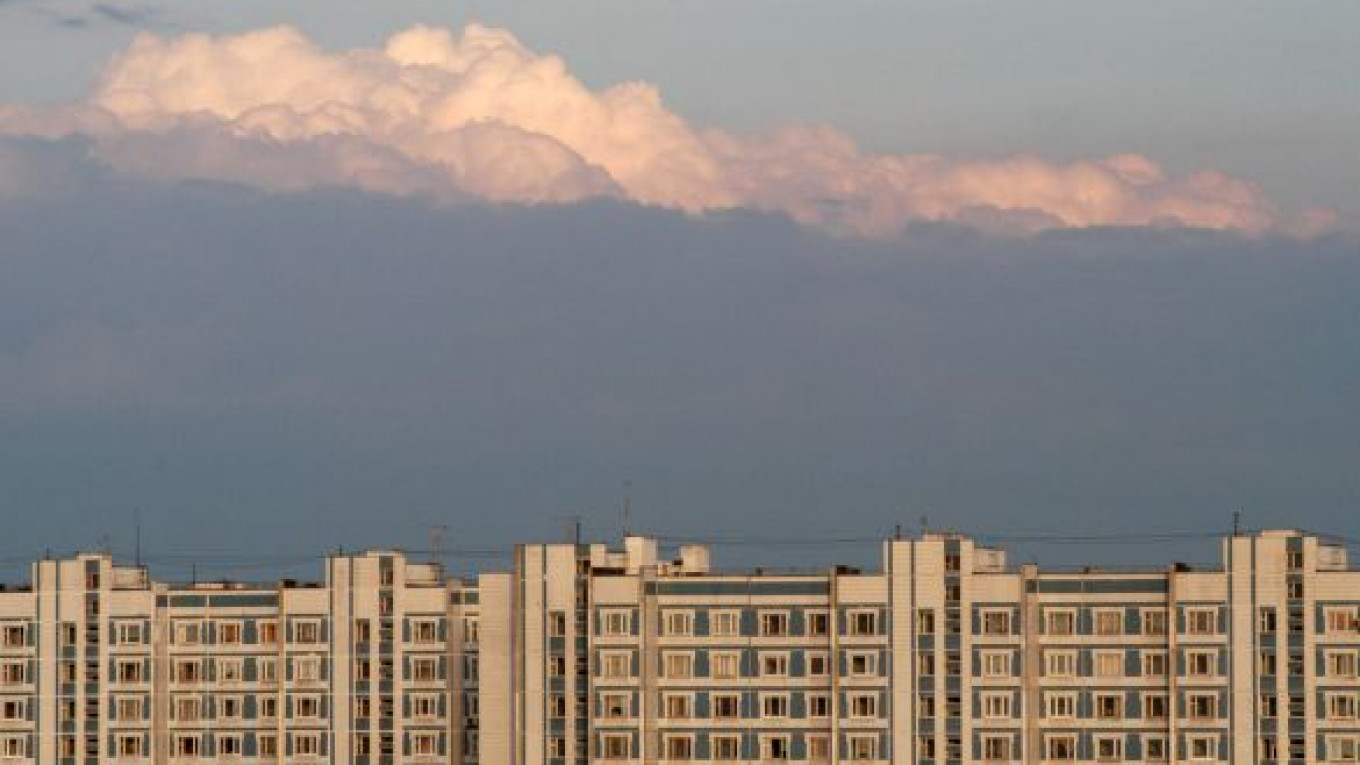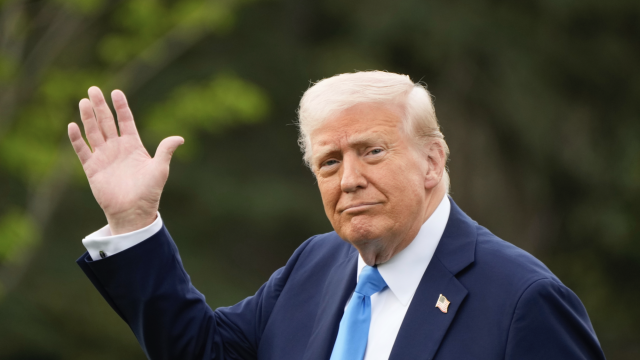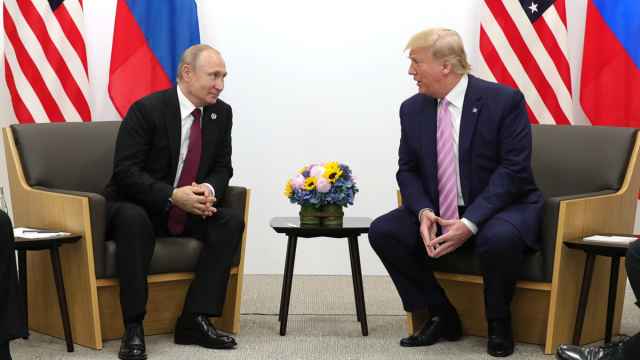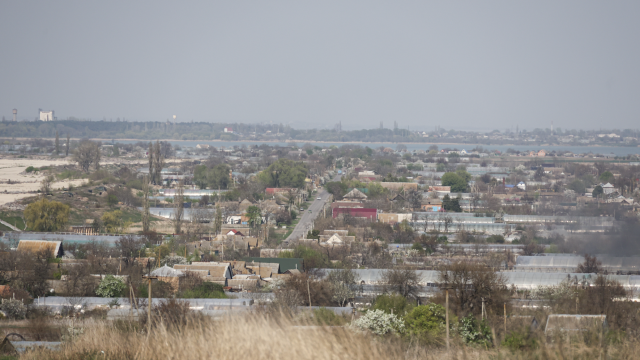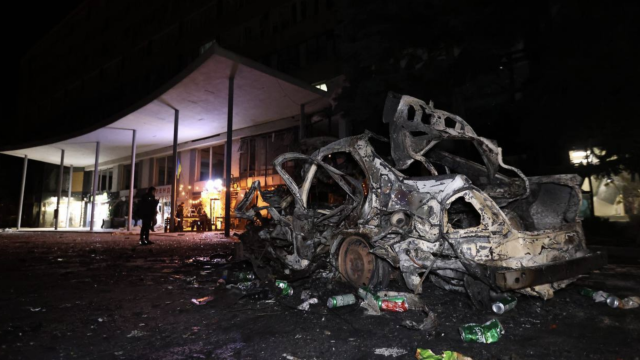Moscow will get a new master plan by 2015 to reflect its forthcoming transformation into a polycentric city, in which peripheral areas become alternative hubs for work and cultural activities, Mayor Sergei Sobyanin said at the third annual Moscow Urban Forum.
Wrapping up on Saturday, the forum brought together 2,900 architects, urban planners, businessmen and politicians from 34 countries to discuss, among other things, how to make the capital's outskirts between the Moscow Ring Road and Third Ring Road more comfortable for their residents.
The periphery has long been dismissed as an area with few work opportunities, cultural activities and low interconnectedness — almost all transportation options head in or out of the clogged city center. Meanwhile large areas remain inefficiently used or are, in the words of city officials, "depressive."
"It is very important to give people who live in the periphery the sense that this is not just a place where they sleep, but also a part of the city in which they have ownership and where they can live an exciting life," said Sergei Kuznetsov, the city's chief architect. "We need to expand people's opportunities to spend more time near their homes."
The authors of a study called " The Archeology of the Periphery," which was commissioned for the forum, expect that Moscow's outlying areas will undergo a mass transformation over the next 30 years. Old buildings will be knocked down to make way for new residences, offices and cultural centers, and connectivity will improve as new transportation routes that bypass the city center are created.
Ninety percent of Muscovites live in the area between the two outer ring roads, but 70 percent of the jobs are located inside the Third Ring Road, and half of these jobs are within the much smaller boundaries of the innermost of the capital's three circular roads, the Garden Ring, according to the study. However, despite the financial draw of the city center, researchers found that suburban residents do not travel to the center as often as they had assumed.
Deputy Mayor Marat Khusnullin said he was surprised to learn that about three-quarters of the city's residents work near their homes. Most people also prefer to spend their free time near where they live.
"We have a stereotype that the periphery is bad. But in the case of Moscow, it is not," Khusnullin said of the opportunities that lie in developing the outer areas. "When we draw up plans for the city, we must do all that is possible to preserve the lifestyle in these suburban districts."
The main challenges faced by Moscow in these areas are unplanned construction, transportation inefficiencies, environmental degradation, and the loss of identity and control over land, said Yury Grigoryan, director of educational programs at the Strelka Institute for Media, Architecture and Design and curator of the research project.
Also, Muscovites are very tightly packed together. The city's population has grown almost nine times in less than a century, going from 1.1 million in 1902 to 11.6 million in 2012, according to official statistics. The Russian capital has about twice the population density of other global cities, such as Tokyo, Greater Paris, Greater London and Berlin, and three to five times less offices and roads per resident, according to statistics released by the Moscow City Master Plan institute in June 2012. The annexation of new, more sparsely populated territory in 2012 eased these figures, though the city remains very concentrated.
At the forum, municipal officials shared their plans for transforming the suburbs, which prioritize taking control of poorly utilized industrial areas, replacing old housing and creating more public spaces, such as parks and cultural centers.
Industrial areas currently cover 18,000 hectares of Moscow, 4,000 of which are already slated for transformation and reprofiling. These areas are expected to become residential neighborhoods, working offices and cultural hubs that would provide an alternative to the city center.
Two planned projects are targeted at the bankrupted "Moskvich" car factory near the Tekstilshiki metro station in the city's southeast and the vast metallurgical complex "Serp i Molot" in the Lefortovo area east of the center.
Transportation is a long-standing issue that urbanists said officials would have to tackle if they want suburban areas to become more comfortable. Moscow's transportation system is built in such a way that almost half of all trips unnecessarily pass through the center of the city, while the center is actually the final destination for just a little more than 15 percent, according to the research study.
City Hall's plans to develop the periphery include ambitious transportation projects, such as the adding of 162 kilometers of new lines and 79 stations to the city's metro by 2020, said Maxim Liksutov, the deputy mayor responsible for transportation and road infrastructure development.
There are also plans to increase the number of pedestrian and cycling routes and create a central transport control center.
In addition to mapping out new centers of activity within the borders of the Moscow Ring Road, the government is putting a lot of emphasis on the development of areas outside that boundary, such as the tract of land to the southwest of the city annexed to Moscow last summer. Officials expect 1.5 million people to eventually settle on this territory and 1 million work spaces to be created, including those in the headquarters of the federal government, which are due to be relocated from the center.
There are 12 business clusters planned for the New Moscow territory alone, including centers of industry, agriculture and even tourism, said Karima Nigmatulina, acting director of the Moscow City Master Plan institute, which is responsible for urban planning.
Some foreign experts, however, were unenthusiastic about the grand designs, particularly where officials harbor plans of new construction.
"I'm scared stiff. Every time people try to create a new city, they always fail," said renowned Danish architect Jan Gehl at an evening reception held at Romanov Dvor on Friday and attended by speakers from the forum and Moscow officials — who mostly sought privacy in a side room.
Representatives of City Hall, on the other hand, were unabashed, speaking of expanding into the surrounding Moscow region as one of the best hopes the city has to deal with its rapidly growing population.
Administrative obstacles between the two separately governed areas were brushed aside. "A unified plan to develop Moscow and the Moscow region is inevitable whether the law allows this or not," Khusnullin said. "The region has become the new periphery area. The real city no longer corresponds to administrative boundaries."
Contact the author at e.smirnova@imedia.ru
A Message from The Moscow Times:
Dear readers,
We are facing unprecedented challenges. Russia's Prosecutor General's Office has designated The Moscow Times as an "undesirable" organization, criminalizing our work and putting our staff at risk of prosecution. This follows our earlier unjust labeling as a "foreign agent."
These actions are direct attempts to silence independent journalism in Russia. The authorities claim our work "discredits the decisions of the Russian leadership." We see things differently: we strive to provide accurate, unbiased reporting on Russia.
We, the journalists of The Moscow Times, refuse to be silenced. But to continue our work, we need your help.
Your support, no matter how small, makes a world of difference. If you can, please support us monthly starting from just $2. It's quick to set up, and every contribution makes a significant impact.
By supporting The Moscow Times, you're defending open, independent journalism in the face of repression. Thank you for standing with us.
Remind me later.


